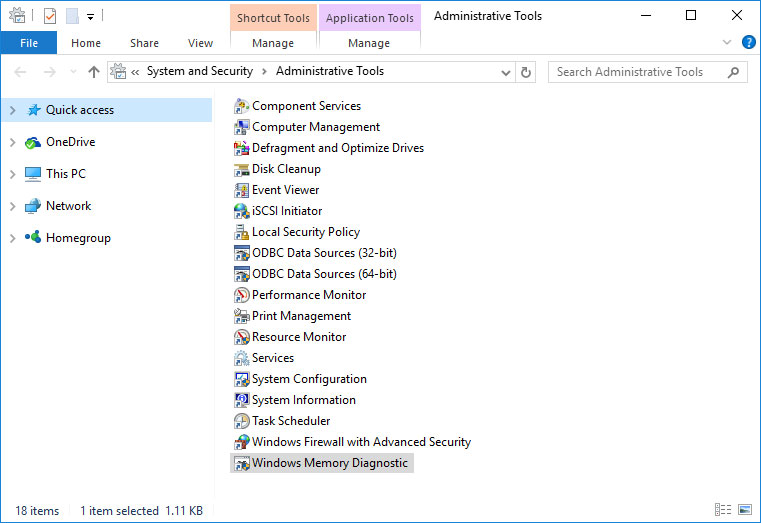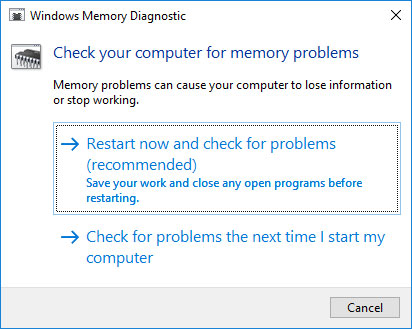Windows 10 often encounters crash particularly after getting bug through an update, using low trust 3rd party utilities or corrupt drivers. PHASE1_INITIALIZATION_FAILED is such a blue screen error. The issue indicates the system has encountered initialization failed. BSOD is a very critical fatality forcing the system to crash unexpectedly with continuous showing up of error messages. There is often irregular flashing on the screen as well as Windows might reboot unexpectedly since the system aims to minimize the data loss. This Blue Screen error also carries a bug check code of 0x00000032.
You can expect the PHASE1_INITIALIZATION_FAILED Blue Screen error in the system because of outdated drivers and corrupted system resources with invalid Catroot, Catroot2, and CodeIntegrity folders mostly. Besides, some other usual factors like outdated operating system, defective hard disk areas, and invalid Windows image files can cause a lot of damage leading to BSOD. Each of these reasons has got specific fixes but you need to try out many of these as the true cause is unknown. Check out the method list from below and navigate to each following the quick links –
PHASE1_INITIALIZATION_FAILED
Here is How to Fix PHASE1_INITIALIZATION_FAILED BSOD Error in Windows 10 –
1] Disable the Automatic Restarting
Blue Screen error is one of the most dangerous fatalities you can ever encounter and almost irrecoverable. The unexpected system crash forces lots of necessary data to be removed from the computer. On the other hand, system intends to keep the effect of this damage cooperatively low and reboots the system. Troubleshooting the error in this state is impossible.
In order to get rid of this loop, you have to disable the Automatic restarting feature of Windows changing default settings. This is not really a workaround instead; you are just creating a functional environment to apply the fixes. Here are the steps to follow for disabling this feature –
- Save all the ongoing tasks.
- Move to the desktop area pressing Win+D hotkey at once.
- Being moved, right-click on This PC icon and select Properties option from there.
- When the new window is visible, click Advanced system settings.
- Once the System Properties popup opens, move into the Advanced tab.
- Hover on the Startup and Recovery area and click the Settings option.
- After a new popup shows up, proceed ahead to System failure area.
- Uncheck the box that reads “Automatically restart”.
- Finally, click the OK button from the bottom to save the changes.
Changes will affect the default settings immediately and system will not reboot anymore unexpectedly and repeatedly. Thereby, the stability will be assured and you can start deploying the below workarounds one after another and fix the blue screen error.
2] Update the Operating System
PHASE1_INITIALIZATION_FAILED BSOD error is much expected in an outdated Windows 10 than an updated one. The reason behind this is, the latest update patches contain probable fixes and security modifications. Microsoft is very much keen about this and releases them at very close intervals. Installing the latest patches will keep the system healthy and out of risk from various bugs & issues. Therefore, follow the below guidelines and install the updates –
- Press Windows key and I to launch the Settings app.
- From the following UI, tap the Update & Security.
- After the next page is right on, select Windows Update from the left pane.
- Move to the adjacent pane and click on Check for updates button.
- When all the patches are available, click Download to begin the process.
- You may be asked for approval before installation, click on Yes.
- Attend a couple of restarting in order to complete the process.
3] Make the system malware-free using Windows Security
Malware is the worst enemy in a system as they damage the resources helping to run the OS smoothly. It’s hard to find them in the system as they stay in disguise and look like a usual file. In order to keep the system malware-free, we need to be cautious initially and then try to strengthen the security shield. It may also happen that, threats have made the system files corrupted and you are getting PHASE1_INITIALIZATION_FAILED BSOD in Windows 10. Therefore, run a full system scan for virus and eliminate them using the below guidelines –
- Open the Start menu and approach alphabetically in the app list.
- Click Windows Security once found.
- From the succeeding window, select Virus & threat protection located at the left pane.
- Click on Scan options link from the adjacent right.
- Select the radio button set against Full scan and click Scan now button.
- When the scanning is over, tap the Clean Threat option if the utility displays some active malware in the system.
- From the next page, click Remove and the Start action buttons to clean up all the threats.
- Finally, Restart Windows 10 to make changes effective.
4] Make all the drivers up to date to Fix PHASE1_INITIALIZATION_FAILED
Whenever the drivers are outdated, the stability of the system deteriorates and it will lose functionality in a wide margin. Updating a driver is usually carried out while updating the Operating System to a newer build. In this way, many of these drivers left outdated and then eventually cause PHASE1_INITIALIZATION_FAILED BSOD in Windows 10. Let’s now update the drivers using Device Manager following the below guidelines –
- Press Win+X hotkey, select Run from the appearing list.
- Type devmgmt.msc in the empty text space and press Enter key.
- When the device console is upfront, search for any mark of exclamation in devices.
- If there is any, expand it by double-clicking. Right-click the outdated driver marked with yellow indication.
- Choose the Update Driver option from the appearing menu.
- Once a small popup floats on display, click Search automatically for drivers option.
- Update all the outdated drivers following the same procedure as above.
- Finally, restart the computer for bringing these changes into effect.
5] Collect and replace Catroot, Catroot2 and CodeIntegrity folders from another PC
The aforementioned BSOD error shows up in Windows 10 when the Catroot, Catroot2, and CodeIntegrity folders are found corrupted, missing, or in damaged condition. In order to fix the error, we have to replace these folders taking from any other fully functional computer.
Make sure that, the computer from where you are copying these files is having the same version and edition of Windows 10. You can check the Windows Specification from the System Settings to confirm. You are able to get the formation easily by following this article – How to Check Laptop Specs in Windows 10. Then go to C:\Windows\System32\CatRoot and C:\Windows\System32\catroot2 and copy them respectively. Replace these folders on your system with the copied folders. Reboot the system and after getting back to operation, check if the error has gone.
6] Run DISM scan to rectify corrupted Windows image files
Windows image files are the snapshots of the major upgrade that releases primarily for creating the CD-R or DVD-R components. These files are saved in ISO ISO-9660 format which can easily be corrupted by third-party applications and tools. Corrupted Windows image files are very much likely to cause PHASE1_INITIALIZATION_FAILED BSOD error in Windows 10. We can fix these images using Deployment Image Servicing and Management (DISM) tool and the guidelines are as follows –
- On Taskbar search, type cmd in the empty text space and hit Enter.
- Right-click Command Prompt in the search result. Select “Run as Administrator” option from the context.
- Click Yes when the User Account Control floats for permission.
- Type the below command at the blinking cursor –
DISM /Online /Cleanup-Image /RestoreHealth
- Press Enter key to execute the command and activate DISM tool.
- Wait until the tool repairs the faulty Windows image files.
- Restart the computer once it finishes.
7] Uninstall unnecessary applications to fix PHASE1_INITIALIZATION_FAILED
Sometimes installing unnecessary programs cause trouble as many are not trusted enough. Some may carry bugs and make the system to crash unexpectedly. Certain programs may come with different names or vendors but the functionality is the same. These applications contain similar system files that can collide later on and you may experience the worst software collision. This always led to crash system files, delete many of them forcibly, and finally, PHASE1_INITIALIZATION_FAILED BSOD shows up. Therefore, uninstall unnecessary program especially the duplicate ones using the below guidelines –
- Invoke Run and type appwiz.cpl in its blank text field.
- Click the OK button to open up Programs and Features window from Control Panel.
- Locate the problematic application in the list and right-click it. Select Uninstall.
- When the confirmation message becomes visible, click Uninstall.
- Follow the on-screen guidelines to complete this process.
- Restart Windows 10 PC and check if the error is resolved.
8] Perform System Restore to load the previous point
PHASE1_INITIALIZATION_FAILED BSOD can come up in the system after installing a new program or removing an existing application. The reason might be an unexpected change in the Windows registry which is a very sensitive area. Therefore, performing System Restore will simply load the previous point and you can get back to a state where the error was not prevalent. To perform the task, follow the below instructions –
- Access Taskbar Search pressing Windows key and S together.
- Type ‘rstrui’ in the text box and hit Enter.
- When System Restore wizard shows up, click Next from the bottom end.
- On the following page, you will see the most recent restore point. Check the box that reads Show more restore points.
- Now, you will be able to see all the previous points and choose any to where you opt to head back.
- Click Next to proceed ahead. Click the Finish button.
- A warning message will show up now, click Yes to continue restoring.
- A blue screen will arrive and restoring will take about 5 minutes and more.
- Once the process completes, system will reboot.
9] Run the System File Checker to identify and fix corrupted system resources
A corrupted file will lose the fixed components and structure in it and will appear as unreadable. The ultimate result is PHASE1_INITIALIZATION_FAILED Blue Screen which is very much detrimental to the system. System File Checker is another handy default utility in Windows 10 that helps to recover the missing resources and rectify corrupted ones. Here are the steps to run the tool –
- Open Run dialog box and type cmd in the text area.
- Press of Ctrl+Shift+Enter keys.
- Click Yes to provide consent when UAC prompts.
- In the black window appearing next, enter the below command –
Sfc /scannow
- Press Enter key to execute the command.
- System File Checker will detect and fix problematic components as well. If there are any missing DLL files, they too will also recover them accordingly.
- Once done, perform Restarting to Windows and check if BSOD has resolved once the next session starts.
10] Use the built-in Windows Blue Screen Troubleshooter
BSOD error shows up in the system with no fixed cause of origin and that complicates the troubleshooting a lot. Microsoft, in order to make the fixing easy and simple, introduced Blue Screen troubleshooter. The intention is to provide exactly the necessary solution based on the problem you are having.
In the beginning, Microsoft has placed this utility in the Windows settings app with all other troubleshooters. Coming to a recent build, tech giants have released an online version of the same tool so that users can take direct online help in case of Blue Screen issues. Here is how to run the troubleshooter to fix PHASE1_INITIALIZATION_FAILED BSOD error –
- Click this link and the default browser will take you to Microsoft’s online troubleshooting web page.
- Hover downward in the upcoming page and reach When did you get the error? area.
- Click any one of the radio buttons from here according to your problem.
- The page will now readjust and show some step-wise tasks in order to fix the Blue Screen error.
- Follow these steps properly and fix the error accordingly.
11] Disable Fast Boot mode to stop carrying over PHASE1_INITIALIZATION_FAILED BSOD
Fast Startup is a combined power option commingling Shutting down and hibernates in order to make the booting process faster. To make the operation, it simply collects all the data from the previous session and carries the over to succeeding startup. Programs as being served with past data, loads faster than usual, and the startup don’t take so much time.
Undoubtedly Fast Startup is one of the finest processes Microsoft has ever provided to the users. Yet, there is a sheer chance of carrying over blue screen error as well to the next session along with other data. Therefore, we need to disable this method for fixing PHASE1_INITIALIZATION_FAILED Blue Screen error. Here are the steps to follow –
- Move the pointer extreme right side of Taskbar and right-click on the battery icon.
- Select Power Options from the context.
- From the succeeding window, select Choose what the power button does link from the left column.
- After the next page unfolds, click on Change settings that are currently unavailable.
- Hover downward and uncheck the box set for Turn on fast startup (recommended).
- Finally, click the Save Changes button.
12] Remove Hardware accessories for some time
Hardware accessories like mouse, keyboard, external hard disk, speakers are very much essential to set up and run a system. Without these gadgets, we cannot get the maximum functionality out of a system. Unfortunately, a few users have come up with complain that they are getting PHASE1_INITIALIZATION_FAILED blue screen error after connecting the hardware accessories.
A big group of users has come up with a self-made resolution that, unplugging these devices, for the time being, can fix the BSOD error. Don’t miss out on the chance to fix the error using this very simple trick of the same happens with you. Make sure that, you have performed restarting after disconnecting them. Check if the error has fixed once the next session begins.
13] Run the Disk Checking tool to resolve PHASE1_INITIALIZATION_FAILED
Bad areas in the hard disk are yet another prime suspect to cause PHASE1_INITIALIZATION_FAILED Blue Screen error in Windows 10. A hard disk is considered as the soul of a system as it has the responsibility to store all the data to make a system fully functional. We seldom take good care of this and let the bad areas form in it. Usually, there two types of bad areas found namely hard or physical and soft or logical. The first one happens due to physical damage while later one occurs due to power outage or forcibly pulling a plug from the device. Here are the guidelines to accomplish this task –
- Access to the Elevated Command Prompt following guidelines from above workarounds.
- When the black window comes in, enter below commands at the base of the blinking cursor –
bootrec.exe /rebuildbcd
bootrec.exe /fixmbr
bootrec.exe /fixboot
- Execute the commands pressing Enter key after each.
- After completing the task, again type the below command and press Enter key –
chkdsk C: /f /r /x
- Execute Disk Checking tool to fix the bad areas accordingly.
- The process might take a while, wait for the full scanning to complete.
- Once done, Restart Windows 10 and make all changes effective.
Methods:
1] Disable the Automatic Restarting
2] Update the Operating System
3] Make the system malware-free
4] Make all the drivers up to date
5] Collect and replace Catroot, Catroot2
6] Run DISM Tool
7] Uninstall unnecessary applications
8] Perform System Restore
9] Run the System File Checker
10] Use built in Windows Blue Screen Troubleshooter
11] Disable Fast Boot mode
12] Remove Hardware accessories
13] Run the Disk Checking tool
That’s all!!
Contents
- What are the common causes of the «PHASE1_INITIALIZATION_FAILED » (0x00000032) error?
- Restore Deleted Files
- Start The Computer in Safe Mode
- Update a Driver With The Device Manager
- Use sfc /scannow To Check All System Files
- Check for Errors The Disk Where Windows Is Installed By Using The Command chkdsk c: /f
- Use The Mode of Compatibility With an Old Version of Windows
- Disable Unnecessary Programs in Windows Startup Menu
- Consult Microsoft Support Service
- Install Latest System Updates
- Scan The System For Viruses
- Test Your RAM
- Make a Clean Installation of Windows
What are the common causes of the «PHASE1_INITIALIZATION_FAILED » (0x00000032) error?
The common causes of the PHASE1_INITIALIZATION_FAILED (0x00000032) error include:
- Corrupted system files or drivers
- Incompatible hardware or software
- Malware or virus infection
- Outdated or faulty device drivers
- Corrupted Windows registry
- Faulty RAM or hard drive
- Power supply issues
- BIOS misconfiguration
- Overheating of the system
- Hardware failure
Also:
-
There is not enough free space in the hard disk of your computer/laptop. For Windows 10 to operate correctly you need to have from 2 to 10 Gb of free space in your system disk.
-
An incompatible version of BIOS was installed or the firmware was damaged.
-
Device drivers incompatible with the OS were installed.
-
Windows registry was damaged or deleted, or cleaning operations accidentally deleted system keys.
-
Antivirus software or viruses may block system files or delete important registry keys.
-
An error occurred in the work of backup software.
-
It can also happen as a result of a Windows update.
Read more how to fix 0x00000032: «PHASE1_INITIALIZATION_FAILED « in Windows 11, Windows 10, Windows 8.1, Windows Server 2012, Windows 8, Windows Home Server 2011, Windows 7 (Seven), Windows Small Business Server, Windows Server 2008, Windows Home Server, Windows Vista, Windows XP, Windows 2000, Windows NT.
Here are some ways of eliminating the problem with «PHASE1_INITIALIZATION_FAILED «:
Restore Deleted Files
Often BSoD errors cause loss of important files. Files blocked by computer viruses, backup software errors, damaged or overwritten system files, file system errors or bad hard disk sectors – these are only some of the causes that can make your data lost.
Corrections of the corresponding errors will restore the normal operation of your devices, but it does not always restore damaged or lost files. Also, it is not always possible to eliminate an error without formatting the hard disk or clean installation of the operating system, which can also involve loss of files.
Partition Recovery™ 5.0
The tool recovers data from any devices, regardless of the cause of data loss.
Download for free and scan your device with the help of Hetman Partition Recovery. Learn about the program features and step-by-step guide.
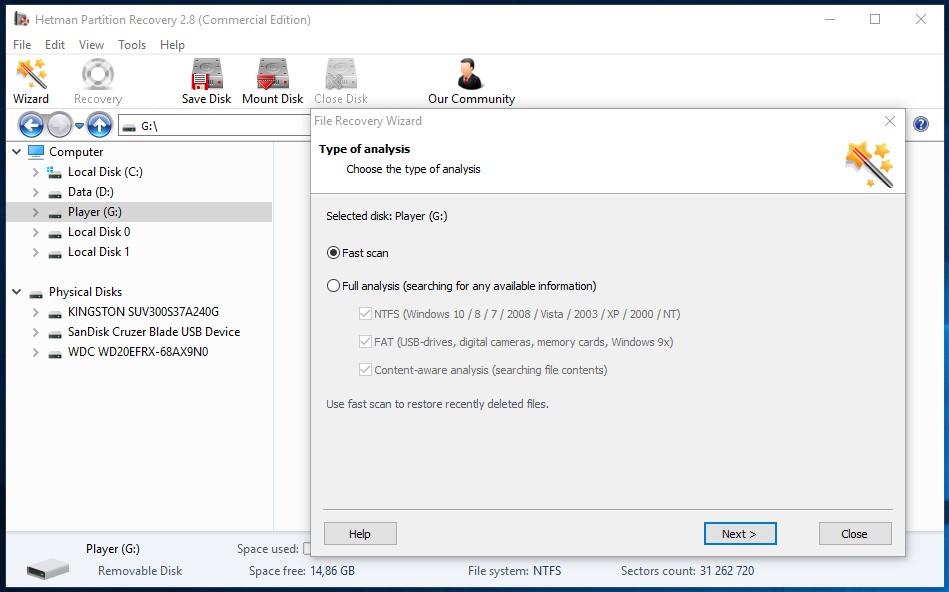
Start The Computer in Safe Mode
If the error «PHASE1_INITIALIZATION_FAILED » (0x00000032) occurs when loading Windows and blocks any attempts to work with the system, try loading the computer in Safe Mode. This mode is meant for operating system (OS) diagnostics, but OS functions are very limited in this mode. Safe Mode should only be used if the system is blocked otherwise.
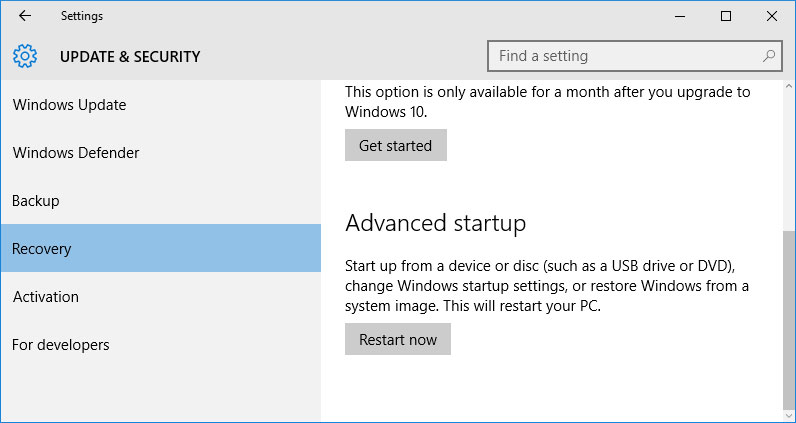
In order to start Safe Mode you should do the following:
-
Go to Start menu and choose Settings.
-
In the settings window that appears go to Update & Security menu and choose the Recovery tab.
-
In the tab Recovery find Advanced startup and click the button Restart now.
-
As your Windows restarts, it will ask you to choose the next step. Choose Troubleshoot.
-
In the Troubleshoot menu click on Advanced Options and then on Startup Settings.
-
Then Windows will inform you that the computer can be restarted with the use of additional settings one of which is Enable Safe Mode. Press Restart.
-
After restarting choose Enable Safe Mode by pressing F4.
Go to view

How to Boot Windows 10 in Safe Mode (All Methods)
Update a Driver With The Device Manager
Have you installed new hardware to your computer? Are you using a new USB device? These can be the causes for the error «PHASE1_INITIALIZATION_FAILED «. If you installed your device driver from the disk you have found in the device delivery package or if you are using a driver which was downloaded from a place other than Microsoft official website, this can be the core of the problem. You will have to update the device driver to fix it.
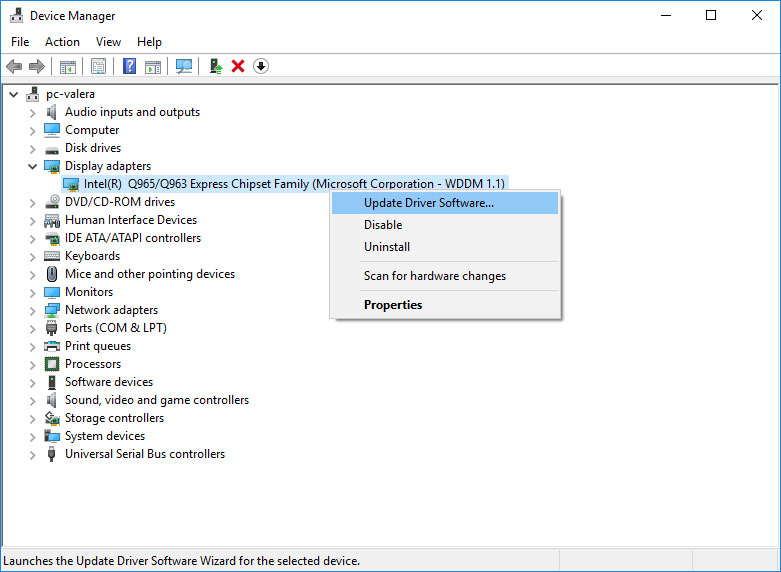
You can do it manually in the Windows device manager by taking the following steps:
-
Press Windows button and type device manager on the keyboard.
-
Choose Device Manager from the list.
-
View the list of device categories and click on the arrow nest to the category in which your new device falls. The driver can be marked with a yellow triangle.
-
Right-click on the device name and press Update Driver Software.
-
Then a window of Update Driver Software with two options will appear:
-
Search automatically for updated driver software. Windows will automatically check availability of the best suitable driver for this device.
-
Browse my computer for driver software. Use this option to show the OS where the driver files are kept.
-
Restart the computer after the driver is installed.
Use sfc /scannow To Check All System Files
Damaged or rewritten system files may cause the error «PHASE1_INITIALIZATION_FAILED «. The command sfc finds damaged Windows system files and replaces them.
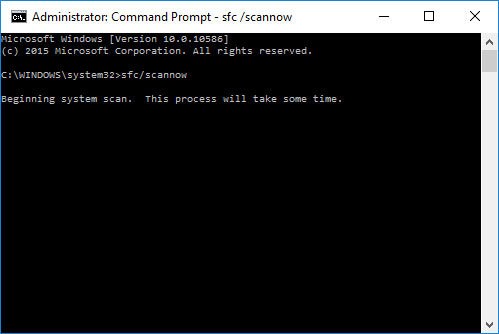
-
Press Windows button and enter cmd from the keyboard.
-
Right-click on CMD and launch it as administrator.
-
In the command prompt window, type in sfc /scannow and press Enter.
This process may take several minutes.
Go to view

How to Recover Windows 10, 8, 7 System Files (SFC, DISM)
Check for Errors The Disk Where Windows Is Installed By Using The Command chkdsk c: /f
The blue screen with «PHASE1_INITIALIZATION_FAILED « may be caused by a file system error or by bad sectors in your disk. The command CHKDSK will check the disk for file system errors and bad sectors. Using the setting /f will make the program to automatically correct the detected errors, and the setting /r allows finding and fixing problem disk sectors. To launch it, follow these steps:

-
Press Windows, then enter CMD from the keyboard.
-
Right-click on CMD and launch it as administrator.
-
In the command prompt window type chkdsk c: /f and press Enter (use the letter of the drive where your OS is installed).
Wait until the process is over and restart your computer.
Use The Mode of Compatibility With an Old Version of Windows
A error with the code «PHASE1_INITIALIZATION_FAILED « may be caused by outdated software. If this error occurs after launching a program, then using Windows compatibility mode can help you get rid of the problem. To fix it, do the following:
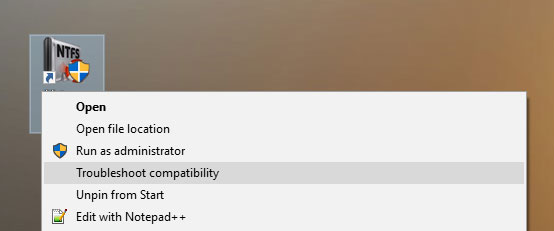
-
Find a program executable file (it has .exe extension) and right-click on it.
-
In the quick menu, select Troubleshoot compatibility.
-
At the next stage, you will see the window Program Compatibility Troubleshooter. You will have two troubleshooting options to choose from:
-
Try recommended settings. Select this variant to start a test run of the program using recommended compatibility settings.
-
Troubleshoot program. Select this variant to choose compatibility settings based on what problems you have encountered.
-
-
After testing the program under various versions of Windows and startup settings save the suitable settings for your program.
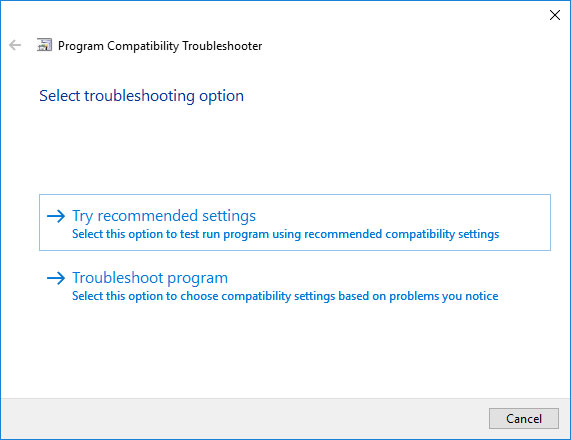
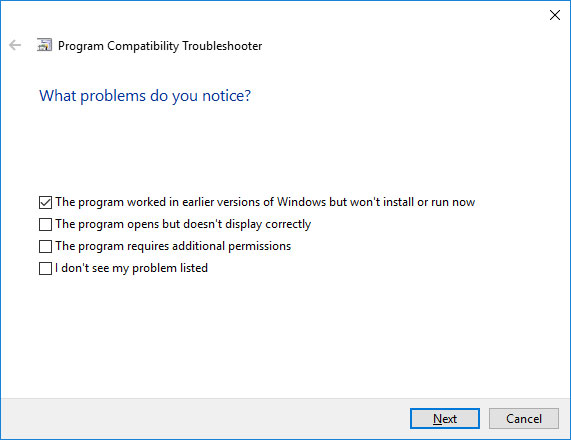

Go to view

How to Run a Program in Compatibility Mode With Windows 10, 8 and 7
Disable Unnecessary Programs in Windows Startup Menu
The software causing «PHASE1_INITIALIZATION_FAILED » (0x00000032) may be written to Windows Startup list so the error occurs immediately after the system starts without any user activity. You can delete programs from Startup by using Task Manager.
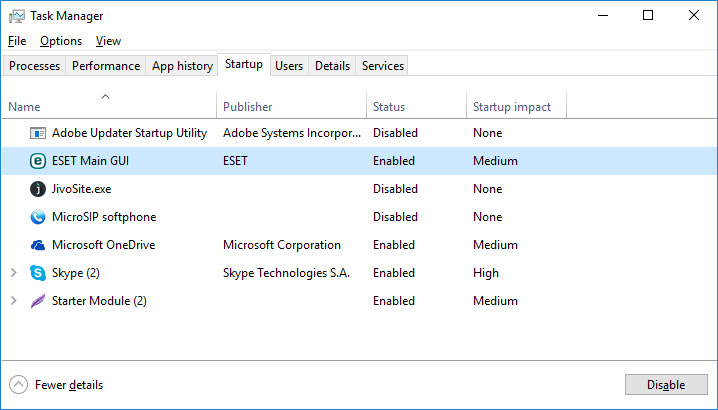
-
Load the computer in Safe Mode.
-
Right-click on Task Bar and then on Task Manager.
-
Go to Startup tab.
-
To delete a program from the startup list select it and disable by clicking Disable in the right lower corner of the window.
Consult Microsoft Support Service
Microsoft offers several solutions to eliminate the blue screen error. «PHASE1_INITIALIZATION_FAILED » (0x00000032) can be fixed with the help of Windows Update or by addressing Windows Support.

-
Go to Microsoft Support Service.
-
Enter your error code and message into the search field and follow the directions.
-
If you don’t find a ready solution as the community where your query can be answered by a certified system administrator.
Install Latest System Updates
Windows provides updates that extend your driver database and correct errors or security vulnerabilities. Download the latest updates to get rid of the error «PHASE1_INITIALIZATION_FAILED » (0x00000032).
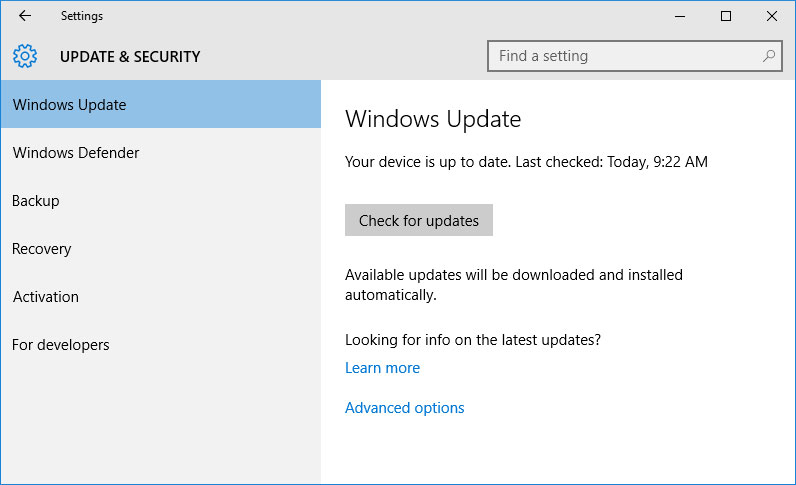
You can launch Windows Update like this:
-
Go to Start menu and select Settings.
-
In the Settings window go to Update and Security tab.
-
To install the latest Windows updates click on Check for updates and wait until they are found and installed.
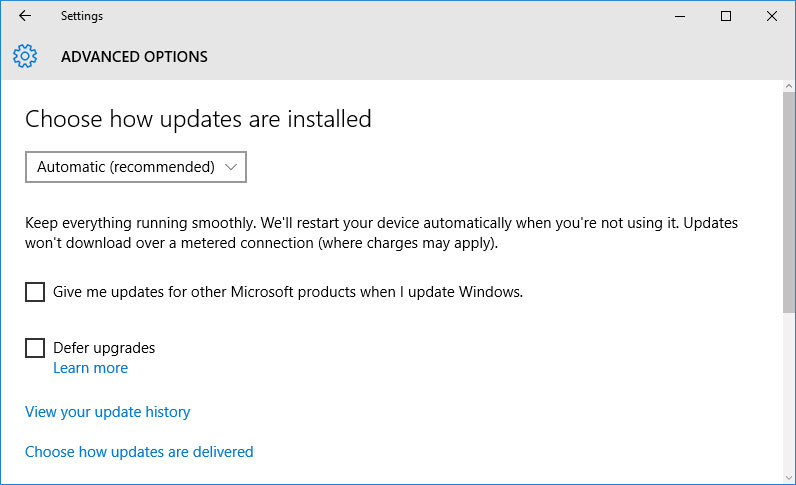
It is recommended to set up automatic download and installation of system updates with the help of Advanced Options.
To enable automatic system update you need to start Windows Update:
-
Go to Start menu and choose Settings.
-
In the Settings window go to the Update and Security menu and select Windows Update. To install the latest Windows updates click on Check for updates and wait until they are found and installed.
-
Go to Advanced Options and choose the mode of update installation — Automatic.
Scan The System For Viruses
The blue screen of death with the error «PHASE1_INITIALIZATION_FAILED » 0x00000032 can be caused by computer viruses that infected your system.
To check the computer for viruses launch your antivirus program.
Modern antiviruses allow checking both hard disks and RAM. Run a full system scan.
Test Your RAM
System memory problems may cause errors, loss of data or even make your computer stop working.
Before you start checking RAM, take it out of the slot on the motherboard and then stick it back again. Sometimes the error «PHASE1_INITIALIZATION_FAILED « can be caused by the memory stick which was set into the slot incorrectly or not tight enough, and sometimes by the slot contacts covered with dust.
If the above actions did not make things better, you can check your RAM with the means of your operating system – Windows Memory Diagnostic.
JYou can start this tool in two ways:
-
With the help of Control Panel:
Go to Control Panel / System and Security / Administrative Tools. Launch the application Windows Memory Diagnostic.
-
With the use of Run:
Launch the Run tool with the combination of keys Windows + R. Type in mdsched and press Enter. The Windows Diagnostic tool will start.
To start the checking select one of the suggested variants to decide how your RAM will be tested after the computer is restarted.
If the diagnostic tool finds errors that cannot be corrected, such memory should be replaced (that is, you have to replace the memory stick where errors were found).
Make a Clean Installation of Windows
If none of the methods helped you to get rid of «PHASE1_INITIALIZATION_FAILED «, try reinstalling Windows. In order to make a clean installation of Windows you need to create a setup disk or another media which you are going to use to install the OS.
Start the computer with the setup disk. To do it you may need to change boot priority in BIOS or UEFI for newer computers.
Following the installer menu stages, specify the disk where you want your Windows installed. You will have to format it then. If you are not satisfied with the number or size of the local disks they can be deleted and repartitioned.
Remember that formatting, deleting or partitioning your disks will destroy all files in the hard disk.
After specifying the disk to install Windows to, the process of copying system files and installing the operating system will start. During the installation, no additional action is required. In the process, the screen will go off for a while several times, and the computer will restart on its own to complete certain stages of installation.
Depending on the version of Windows at one of the stages you may have to select or enter basic personalization settings, choose how the computer works with networks and select settings of your account or create a new one.
As the computer loads the desktop, a clean installation of Windows is finished.
Note. Before you start a clean installation of Windows make sure you have drivers for all your hardware and that your files are safe. Download and save drivers to a separate media, and create a backup copy of important data.
Go to view

How to Reset Windows 10 or 8 PC to Factory Default Settings (All Methods)
Go to view

How to Reset Windows 10 or 8 PC If The Operating System Won’t Boot
Create an account on the HP Community to personalize your profile and ask a question
Your account also allows you to connect with HP support faster, access a personal dashboard to manage all of your devices in one place, view warranty information, case status and more.
This topic has been archived. Information and links in this thread may no longer be available or relevant. If you have a question create a new topic by clicking here and select the appropriate board.
12-29-2016
07:30 PM
HP Recommended
- Mark as New
- Bookmark
- Subscribe
- Permalink
- Flag Post
Product: HP Stream Notebook — 13-c019tu
Operating System: Microsoft Windows 10 (64-bit)
After reset my notebook I am facing a blue screen that shows » your PC ran into a problem and needs to restart. We’ll restart it for you» stop code : phase1 initialization failed
And my PC is automatically restarting every time
Please show me the solution to fix this
1 REPLY 1
kyle_b
1,591
328
133
5,627
Level 10
12-30-2016
08:46 AM
— edited
12-30-2016
08:47 AM
HP Recommended
- Mark as New
- Bookmark
- Subscribe
- Permalink
- Flag Post
Some things to try:
- Hold the Windows key plus the B key when starting to reset the BIOS.
- Let the battery fully discharge, plug in the power supply and boot it.
- Reset it to the factory configuration by holding the ESC key when powering up and then F11.
- Reset it to the factory configuration by booting from a recovery USB.
- If it had Windows 10 previously installed, reinstall Windows 10 fresh using the install USB from Microsoft.
This topic has been archived. Information and links in this thread may no longer be available or relevant. If you have a question create a new topic by clicking here and select the appropriate board.
† The opinions expressed above are the personal opinions of the authors, not of HP. By using this site, you accept the Terms of Use and Rules of Participation.
-
English
Open Menu
† The opinions expressed above are the personal opinions of the authors, not of HP. By using this site, you accept the <a href=»https://www8.hp.com/us/en/terms-of-use.html» class=»udrlinesmall»>Terms of Use</a> and <a href=»/t5/custom/page/page-id/hp.rulespage» class=»udrlinesmall»> Rules of Participation</a>.
When I boot my computer up, I always get a BSOD that says phase 1 initialization failed, and it repeats. How can I fix this error?
Best Answered by
Cici· Answered on Apr 01, 2025
Before diving into the workable solutions, let’s check the possible causes for this error:
- Corrupted or Incompatible Drivers
- BIOS Issues
- Damaged Windows Registry
- Corrupted System Files
The first thing you should do is check and update your Windows/driver to the latest version. To address the PHASE1_INITIALIZATION_FAILED BSOD error, you can try the following solutions:
Way 1. Run Boot Up Repair
via EaseUS Partition Master
Download EaseUS Partition Master Professional and follow this guide to apply Boot Repair via this extensive startup problems rescuer:
📌Detailed Guide: How Do I Fix Windows 10 BSOD
via Command Prompt
If you don’t want to download this tool, you can try the Startup Repair of Windows.
Step 1. In the Advanced options menu, select «Command Prompt.»
Step 2. Enter the lines below:
- bootrec /fixmbr
- bootrec /fixboot
- bootrec /rebuildbcd
Way 2. Run Windows Startup Repair
📌Detailed Guide: [Quick Steps] How to Enter Startup Repair Windows 10
Way 3. Run System File Checker (SFC) and DISM
📌Detailed Guide: How to Run SFC and DISM
Way 4. Check for Hardware Issues
You can run CHKDSK commands to check if there is a bad sector on your hard drive.
If you have a system restore point from when your computer was working correctly, use it to revert your system to that state.

